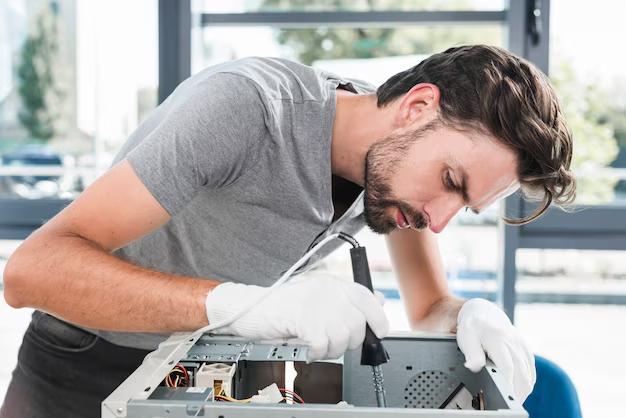Clear the Way: How to Unclog Your Refrigerator's Defrost Drain
Has your refrigerator ever surprised you with a pool of water at its base? You're not alone. Many households encounter this nuisance, which often traces back to a clogged defrost drain. Understanding how this system works and knowing how to remedy it can save you time, money, and the inconvenience of calling in professional help. In this comprehensive guide, we'll explore the intricacies of unclogging your refrigerator's defrost drain.
🧊 Understanding the Defrost Drain Problem
What is a Defrost Drain?
A refrigerator's defrost system is designed to manage the frost that builds up in the freezer. During the defrost cycle, a heater melts frost into water, which then channels through a small tube called the defrost drain into a drip pan usually located under the appliance. This setup ensures your fridge remains frost-free and your freezer compartment doesn't turn into an iceberg.
Signs of a Clogged Defrost Drain
A blocked defrost drain often manifests through:
- Pooling Water: Noticeable water accumulation inside or at the bottom of the freezer.
- Ice Build-up: Unusual frost or ice clusters around the drain area.
- Unpleasant Odors: Stale or moldy smells emanating from your fridge.
Understanding these symptoms early can help prevent more extensive damage and ensure your refrigerator continues to operate efficiently.
🔍 Diagnosing the Issue
How to Check If the Drain Is Clogged
Before you grab your tools, ensure it's indeed a defrost drain problem:
- Inspect the Freezer: Remove any stored food and check for excessive ice.
- Locate the Drain: Typically found at the back of the freezer floor.
- Check for Obstructions: Use a flashlight to see if any visible blockage (like food debris or ice) is present.
Identifying that the drain is indeed obstructed is the first step in resolving the issue accurately.
🛠️ Steps to Unclog the Defrost Drain
Unclogging a refrigerator defrost drain might seem daunting, but with some patience and basic tools, you can tackle it yourself.
Gather Your Tools
Before you start, ensure you have:
- A turkey baster or a syringe
- Warm water
- A pipe cleaner or a small flexible brush
- Towels
- Mild dish soap
Step-by-Step Process
Safety First: Unplug the refrigerator to prevent any electrical hazards.
Empty the Freezer: Remove all items to provide clear access to the drain area.
Melt the Ice: If ice is the culprit, gently melt it using warm water from a turkey baster. Dispense the water slowly to avoid splashing.
Remove Debris: Once the ice is cleared, use a pipe cleaner or brush to gently remove any other blockage, such as food particles.
Rinse the Drain: Use the turkey baster filled with a soapy water solution to flush through the drain several times, ensuring all residues are cleaned out.
Dry and Reassemble: Wipe down the area with towels, replace the freezer contents, and plug the refrigerator back in.
🌡️ Preventing Future Clogs
Regular Maintenance Tips
To keep your defrost drain clear and functioning:
Regular Cleaning: Periodically inspect and clean the drain to prevent debris build-up.
Temperature Monitoring: Ensure the freezer is set at an appropriate temperature to minimize frost accumulation.
Freezer Organization: Keep food items away from the drain area to prevent accidental blockage.
By maintaining these practices, you can significantly lessen the chances of encountering drain clogs.
🤔 What If It Doesn’t Work?
When to Seek Professional Help
While DIY solutions are effective, sometimes the issue might be more complicated:
Persistent Clogs: If blockages persist despite following the steps.
Mechanical Issues: If there's a deeper mechanical problem, like a malfunctioning defrost heater.
Warranty Coverage: If your refrigerator is under warranty, it may be prudent to contact the manufacturer.
Recognizing when to call in expert assistance can prevent further damage and ensure optimal refrigerator performance.
🔄 Recap and Key Takeaways
Here's a quick summary of the key steps in unclogging and maintaining a refrigerator defrost drain:
- 🚫 Identify the Problem: Water pooling, ice build-up, or bad odors are tell-tale signs.
- 🎯 Targeted Cleaning: Use warm water and a flexible tool to clear the clog.
- 🧽 Consistent Maintenance: Regular checks and cleaning prevent future issues.
- 🤝 Seek Help When Needed: Don't hesitate to consult professionals if challenges arise beyond your DIY reach.
Keeping these pointers in mind ensures your refrigerator stays in top shape, prolonging its lifespan and efficiency.
In conclusion, dealing with a clogged defrost drain doesn't have to be a hassle. By understanding the problem, employing effective DIY solutions, and maintaining regular checks, your fridge can run smoothly without interruption. Your home deserves appliances that work efficiently, and with this guide, you’ll be well-equipped to tackle and prevent defrost drain issues with confidence.
